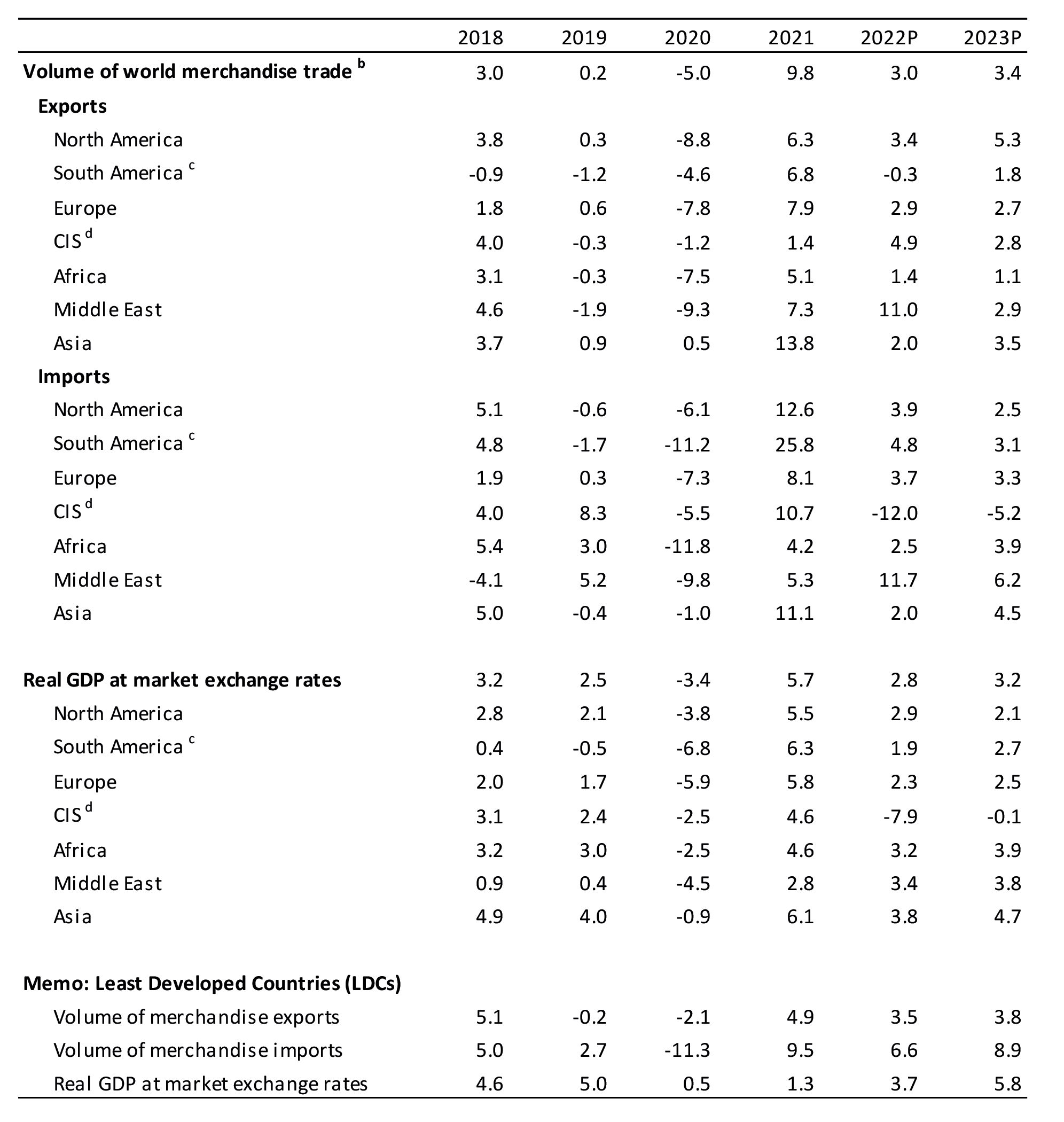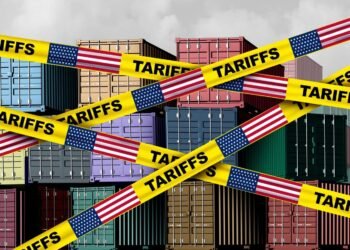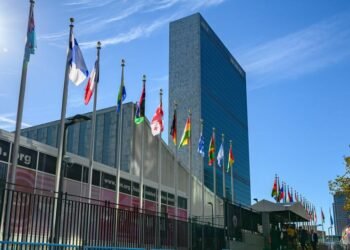Prospects for the global economy have darkened since the outbreak of war in Ukraine on 24th February, 2022, prompting WTO economists to reassess their projections for world trade over the next two years.
World merchandise trade volume is now expected to grow by 3.0% in 2022 — down from the previous forecast of 4.7% — and is projected to improve marginally to 3.4% in 2023, according to latest trade forecast released by the WTO. The World Trade Organization (WTO) however, stated that these figures may be subject to revision due to uncertainty about the course of the conflict in Ukraine. The recent projection is a massive decline as the volume of merchandise trade rose by 9.8% in 2021.
World GDP at market exchange rates is expected to increase by 2.8% in 2022 after rising 5.7% in 2021. The WTO expects output growth to pick up to 3.2% in 2023, assuming persistent geopolitical and economic uncertainty.
According to the WTO, the most immediate economic impact of the crisis has been a sharp rise in commodity prices. WTO stated that despite their small shares in world trade and output, Russia and Ukraine are key suppliers of essential goods including food, energy, and fertilizers, supplies of which are now threatened by the war. Grain shipments through Black Sea ports have already been halted, with potentially dire consequences for food security in poor countries, the trade organization warned.
The war is not the only factor weighing on world trade at the moment. The global trade organization stated that lockdowns in China to prevent the spread of COVID-19 are again disrupting seaborne trade at a time when supply chain pressures appeared to be easing. This could lead to renewed shortages of manufacturing inputs and higher inflation, the WTO stated.
Director-General calls for more trade
Director-General of the WTO, Dr. Ngozi Okonjo-Iweala, said the war in Ukraine has created immense human suffering, but it has also damaged the global economy at a critical juncture. Its impact will be felt around the world, particularly in low-income countries, where food accounts for a large fraction of household spending, she said, calling for continuous trade among countries.

“Smaller supplies and higher prices for food mean that the world’s poor could be forced to do without. This must not be allowed to happen. This is not the time to turn inward. In a crisis, more trade is needed to ensure stable, equitable access to necessities. Restricting trade will threaten the wellbeing of families and businesses and make more fraught the task of building a durable economic recovery from COVID‑19”.
Director-General Ngozi Okonjo-Iweala
The Director-General said governments and multilateral organizations must work together to facilitate trade at a time of sharp inflationary pressures on essential supplies and growing pressures on supply chains. She further said “History teaches us that dividing the world economy into rival blocs and turning our backs on the poorest countries leads neither to prosperity nor to peace. The WTO can play a pivotal role by providing a forum where countries can discuss their differences without resorting to force, and it deserves to be supported in that mission”.
Merchandise exports and imports by region
The Commonwealth of Independent States (CIS) region is projected to see a 12.0% decline in imports and a 7.9% drop in GDP in 2022, but exports should grow by 4.9% as other countries continue to rely on Russian energy. Regional disparities may narrow due to weak import demand in Europe and Asia, according to the WTO.
Table 1: Merchandise trade volume and real GDP, 2018-2023

The WTO stated that services trade will also be affected by the conflict in Ukraine, including in the transport sector, which covers container shipping and passenger air transport.
The forecast foresees 2022 export volume growth of 3.4% in North America, -0.3% in South America, 2.9% in Europe, 4.9% in the CIS, 1.4% in Africa, 11.0% in the Middle East, and 2.0% for Asia. It also anticipates import growth of 3.9% in North America, 4.8% in South America, 3.7% in Europe, -12.0% in the CIS, 2.5% in Africa, 11.7% in the Middle East and 2.0% in Asia.
Also, LDCs are expected to see their export and import volumes increase by 3.5% and 6.6% respectively in 2022. Except for the Middle East, all regions saw forecasts for 2023 revised downward. Meanwhile, the WTO warned that trade costs will rise in the short run as a result of sanctions, export restrictions, energy costs and disruptions in transport due to COVID-19.
READ ALSO: Ghana’s Pharmaceutical Industry, New Growth Pole For Industrial Transformation























